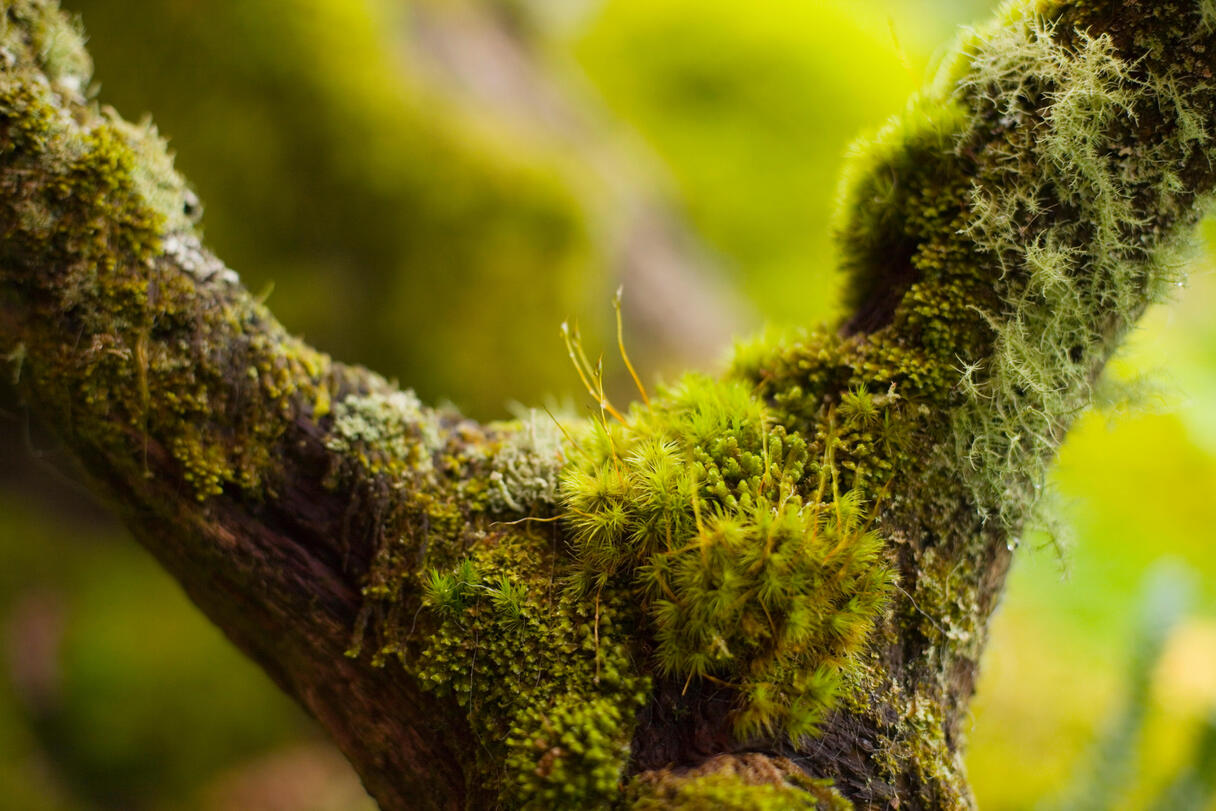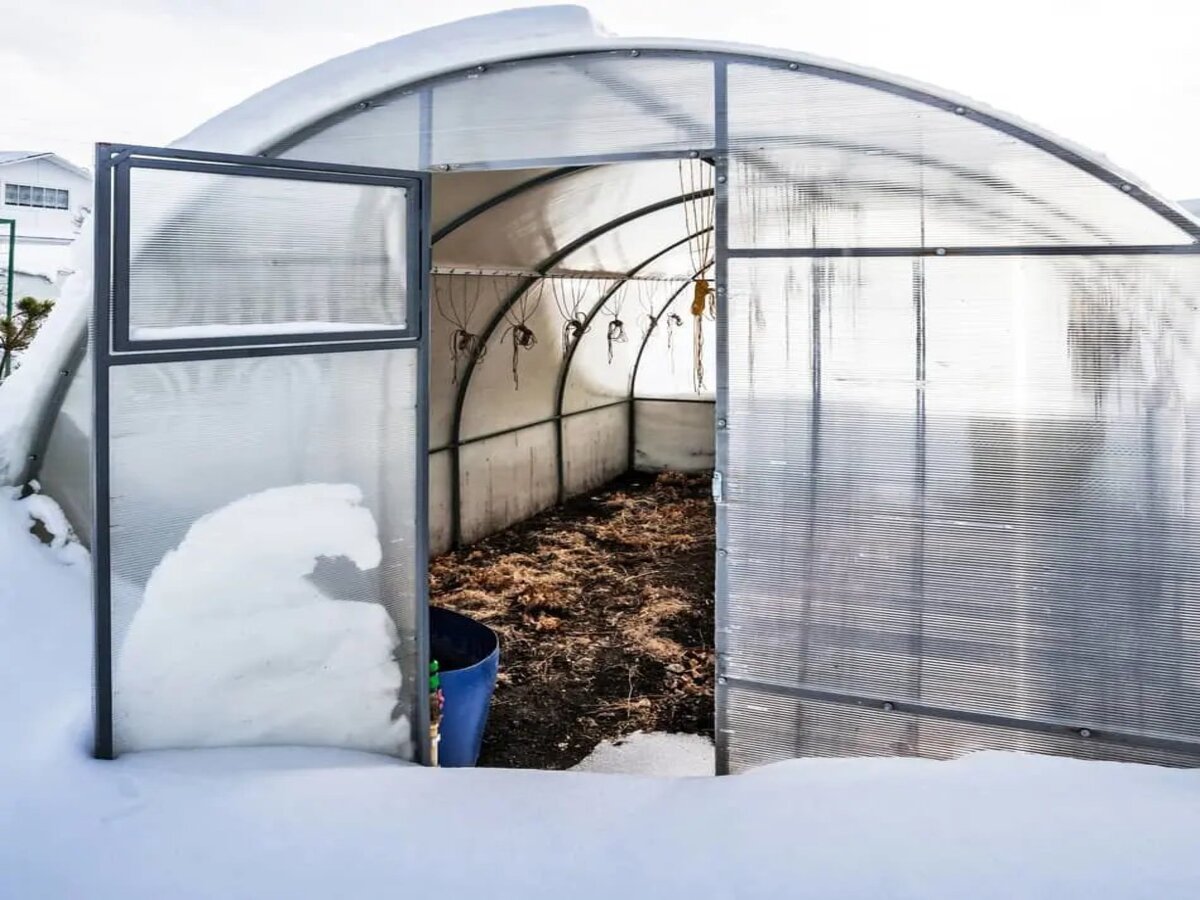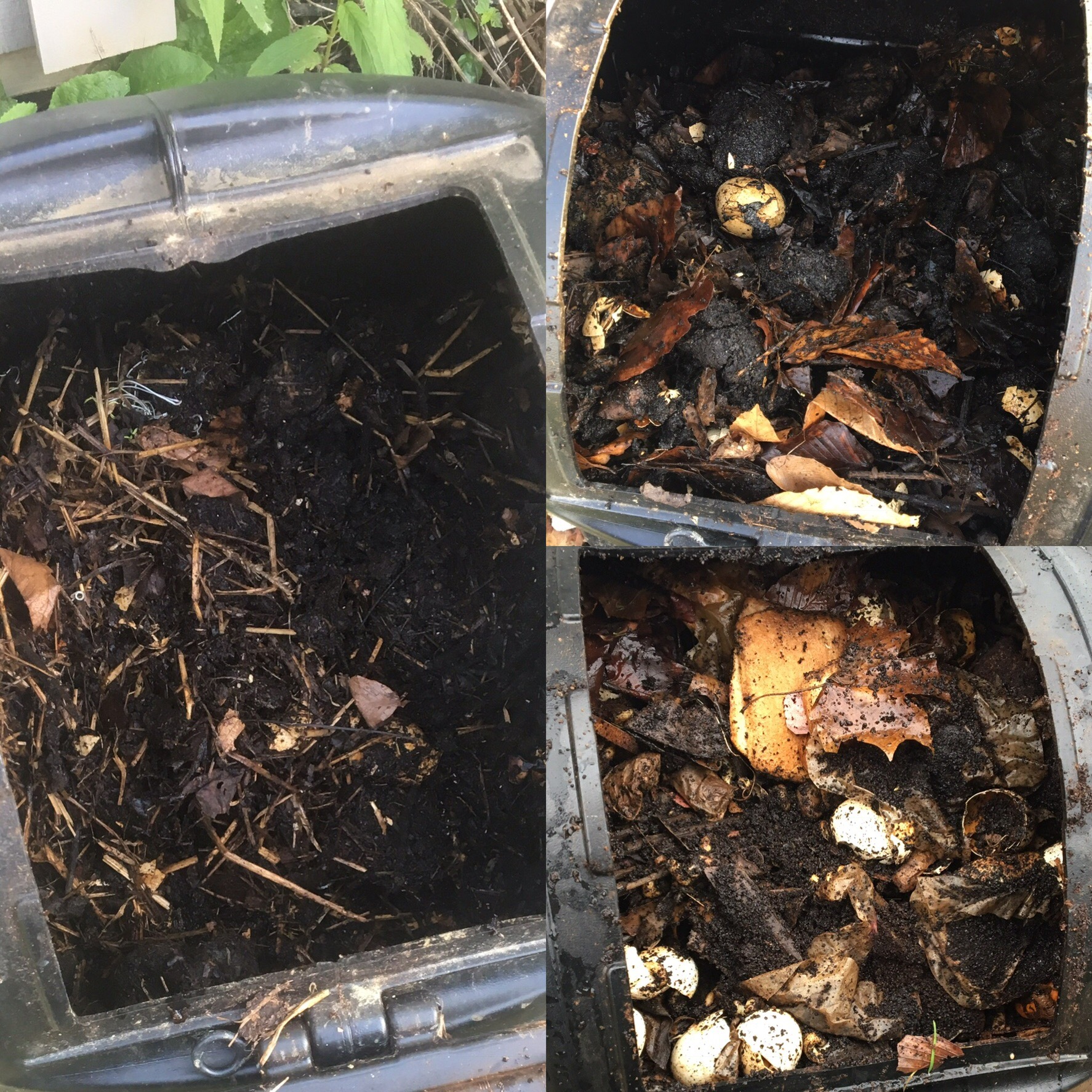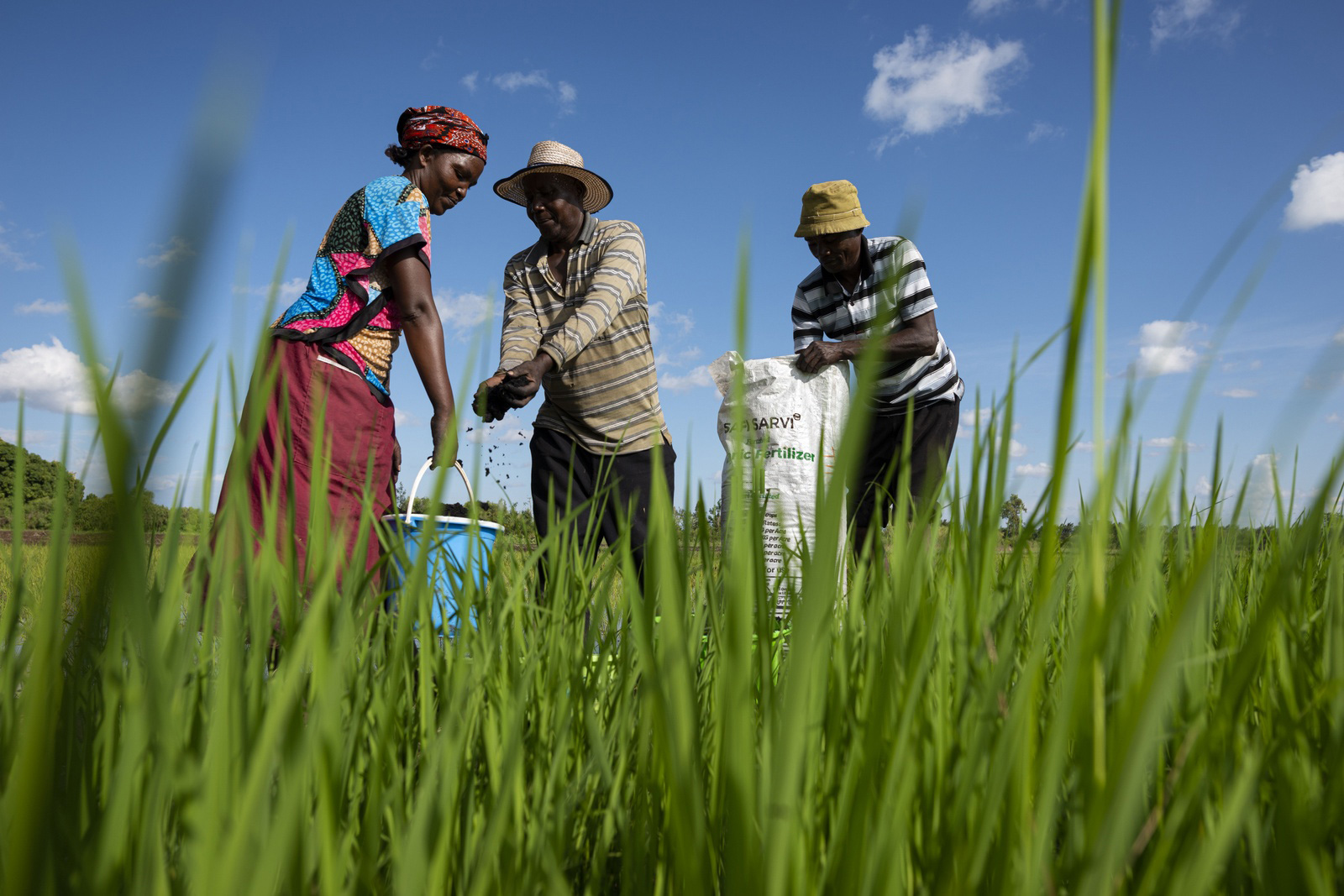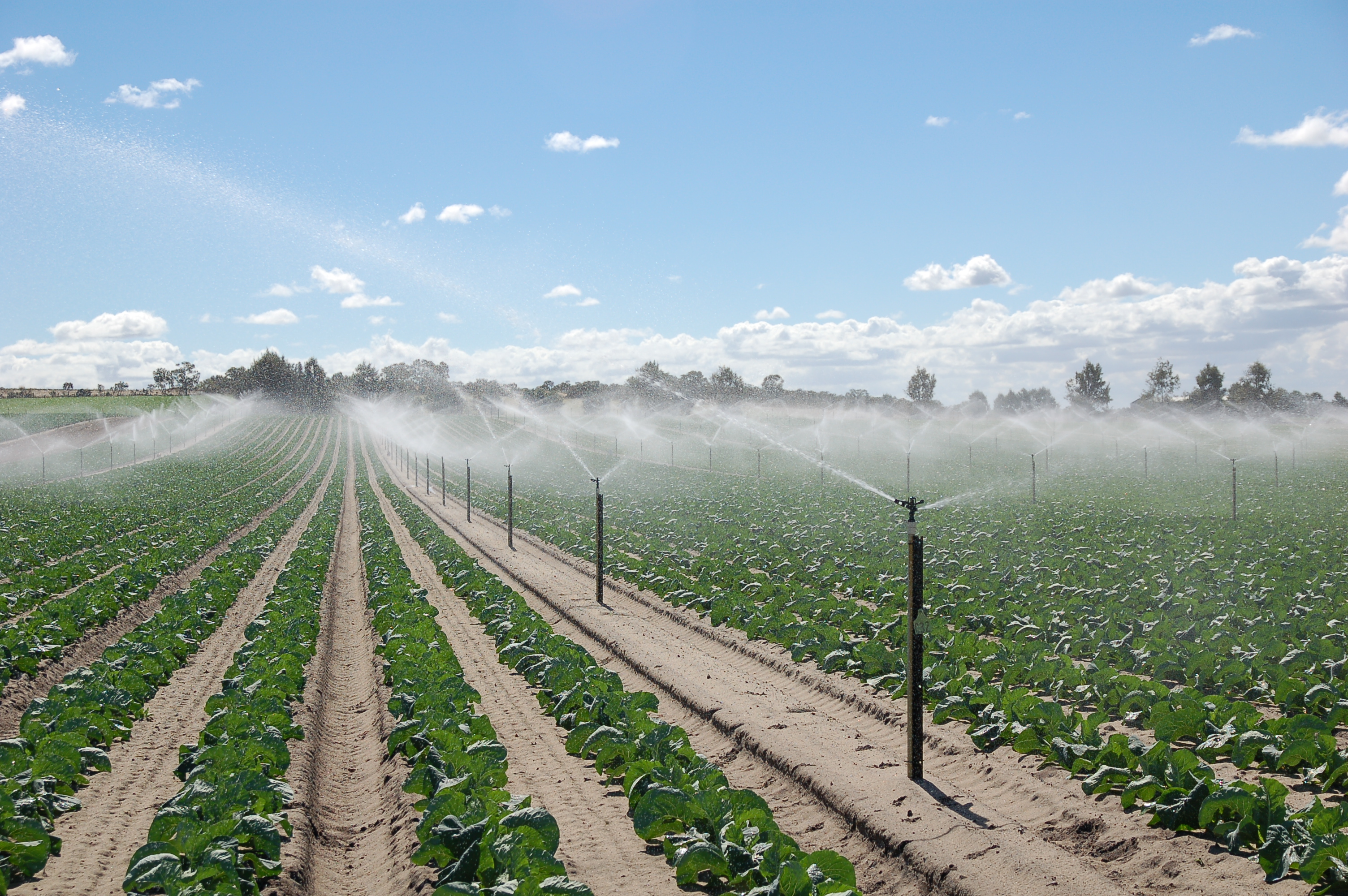Home>Gardening Tips and Tricks>Eco-Friendly Gardening>Why Does Cutting Down Trees Increase Global Warming?


Eco-Friendly Gardening
Why Does Cutting Down Trees Increase Global Warming?
Modified: January 22, 2024
Learn about the detrimental effects of cutting down trees on global warming and discover eco-friendly gardening practices to mitigate this environmental issue.
(Many of the links in this article redirect to a specific reviewed product. Your purchase of these products through affiliate links helps to generate commission for Chicagolandgardening.com, at no extra cost. Learn more)
Table of Contents
- Introduction
- Deforestation and its Impact on Global Warming
- Release of Carbon Dioxide (CO2) through Deforestation
- Reduction of Carbon Sequestration
- Loss of Biodiversity and Its Contribution to Global Warming
- Increased Soil Erosion and Its Effects on Global Warming
- Impacts on Water Cycle and Global Warming
- Deforestation and the Feedback Loop of Global Warming
- Conclusion
Introduction
Welcome to the world of eco-friendly gardening! In a time where environmental consciousness is of utmost importance, adopting sustainable practices in all aspects of life, including gardening, is crucial. Eco-friendly gardening not only benefits the planet but also allows us to create a beautiful and vibrant outdoor space that harmonizes with nature.
But what exactly is eco-friendly gardening? It is a practice that focuses on reducing the environmental impact of gardening activities by minimizing the use of synthetic chemicals, conserving water, promoting biodiversity, and adopting sustainable gardening techniques. By implementing these methods, we can create a sustainable garden ecosystem that not only supports our plant and animal companions but also helps combat the pressing issue of global warming.
Global warming, also known as climate change, is one of the most significant challenges facing our planet today. It refers to the long-term increase in Earth’s average temperature, primarily caused by the buildup of greenhouse gases in the atmosphere. These greenhouse gases trap heat, leading to a myriad of consequences, including rising sea levels, extreme weather events, and the loss of biodiversity.
While most people commonly associate emissions from burning fossil fuels with global warming, the role that deforestation plays in exacerbating climate change often goes unnoticed. The act of cutting down trees not only leads to the loss of valuable ecosystems but also contributes to the release of carbon dioxide (CO2) into the atmosphere.
Throughout this article, we will explore how deforestation impacts global warming, from the release of CO2 to the loss of carbon sequestration potential. Additionally, we will address how deforestation contributes to the loss of biodiversity, soil erosion, and disruptions in the water cycle, all of which further exacerbate the effects of global warming. By understanding these connections, we can develop a deeper appreciation for the importance of eco-friendly gardening practices and their role in mitigating climate change.
Deforestation and its Impact on Global Warming
Deforestation is the act of clearing or removing trees and forests from a particular area. It is primarily driven by human activities such as agriculture, logging, and urbanization. While deforestation has various negative consequences, one of its most significant impacts is its contribution to global warming.
When trees are cut down, they release the carbon stored in their biomass back into the atmosphere in the form of carbon dioxide (CO2), a greenhouse gas. This process significantly increases the concentration of CO2 in the atmosphere, leading to the enhanced greenhouse effect and subsequent global warming. In fact, deforestation accounts for approximately 10% of global greenhouse gas emissions.
The release of CO2 through deforestation creates a dangerous feedback loop. As the atmosphere warms, it exacerbates the occurrence of extreme weather events such as heatwaves and droughts, which further stress ecosystems and increase the risk of forest fires. These forest fires release even more CO2 into the atmosphere, intensifying global warming and perpetuating the destructive cycle.
In addition to releasing CO2, deforestation also disrupts the carbon sequestration process. Trees act as natural carbon sinks, absorbing CO2 from the atmosphere and storing it in their trunks, branches, leaves, and roots. When forests are cleared, this vital carbon sequestration function is lost, resulting in the continued accumulation of CO2 in the atmosphere. It is estimated that deforestation is responsible for the loss of approximately 15% of global carbon sequestration capacity.
It is important to note that not all deforestation activities have the same impact on global warming. Clearing primary forests, which are older and more biodiverse, has a greater carbon footprint compared to the conversion of secondary forests or tree plantations. This is because primary forests store more carbon and provide essential habitat for countless species.
Furthermore, deforestation in tropical rainforests has a disproportionately significant impact on global warming. Despite covering only 6% of Earth’s land surface, tropical rainforests are responsible for nearly 40% of global deforestation-related CO2 emissions. This is due to the immense carbon storage potential of these diverse forests.
Overall, the link between deforestation and global warming is undeniable. By destroying forests and releasing stored carbon, deforestation contributes significantly to greenhouse gas emissions and accelerates climate change. To combat global warming effectively, we must prioritize the preservation and restoration of forests, employing sustainable practices and embracing eco-friendly gardening techniques that minimize deforestation and promote biodiversity.
Release of Carbon Dioxide (CO2) through Deforestation
Deforestation is a major contributor to the release of carbon dioxide (CO2) into the atmosphere, making it a significant driver of global warming. As trees are cut down and forests are cleared for various purposes, the carbon stored in their biomass is released back into the atmosphere, intensifying the greenhouse effect.
When a tree is alive, it absorbs CO2 from the atmosphere through the process of photosynthesis. Through photosynthesis, trees convert carbon dioxide and sunlight into oxygen and glucose, storing the carbon in their trunks, branches, leaves, and roots. This carbon sequestration process is vital for maintaining a balance of greenhouse gases in the atmosphere.
However, when trees are removed through deforestation, the stored carbon is released. This occurs through two primary mechanisms: burning and decomposition. In many cases, forests are cleared through slash-and-burn practices, where the felled trees and vegetation are burned. This burning process releases large amounts of CO2 into the atmosphere, contributing to greenhouse gas emissions.
Even when the trees are not burned, the decomposition of their biomass still results in the release of CO2. When a tree dies or is cut down, its organic matter begins to decompose. During decomposition, microorganisms break down the tree’s organic material, releasing CO2 as a byproduct. This decomposition process can continue for several years, further increasing the CO2 emissions.
The release of CO2 through deforestation has a significant impact on global warming. The buildup of CO2 in the atmosphere traps heat, leading to rising global temperatures and related climate changes. The Intergovernmental Panel on Climate Change (IPCC) estimates that deforestation contributes to approximately 15% of global greenhouse gas emissions, primarily in the form of CO2.
It is worth noting that the CO2 released through deforestation not only contributes to global warming but also disrupts the delicate balance of carbon sequestration. Forests play a crucial role as natural carbon sinks, absorbing CO2 from the atmosphere and storing it in their biomass. However, when trees are cut down, this vital carbon sequestration function is lost, further exacerbating the carbon imbalance in the atmosphere.
To mitigate the release of CO2 through deforestation, it is imperative to focus on sustainable land management practices. Reforestation efforts, the promotion of responsible forestry practices, and the implementation of policies that discourage deforestation can all help minimize CO2 emissions and combat global warming. Embracing eco-friendly gardening techniques that prioritize tree conservation and restoration can also make a significant difference in reducing the release of CO2 into the atmosphere.
Reduction of Carbon Sequestration
Deforestation not only releases carbon dioxide (CO2) into the atmosphere but also disrupts the carbon sequestration process, further exacerbating the effects of global warming. Trees are essential natural carbon sinks, absorbing CO2 from the atmosphere and storing it in their biomass. However, when forests are cleared, this vital carbon sequestration function is significantly diminished.
Forests, especially old-growth and primary forests, have immense carbon storage potential. Their extensive biomass, which includes the trunks, branches, leaves, and roots of mature trees, can hold vast amounts of carbon. Through the process of photosynthesis, trees convert atmospheric CO2 into organic matter, which is then stored for years within their physical structures.
When deforestation occurs, this valuable carbon sink is stripped away. Without trees to absorb and sequester CO2, the balance between the release and removal of greenhouse gases is disrupted. As a result, more CO2 accumulates in the atmosphere, contributing to the greenhouse effect and global warming.
It is estimated that deforestation is responsible for the loss of approximately 15% of global carbon sequestration capacity. This reduction in the Earth’s ability to store carbon exacerbates the challenges posed by greenhouse gas emissions. With less carbon being sequestered, the excess CO2 remains in the atmosphere, intensifying the greenhouse effect and leading to higher global temperatures.
Moreover, the loss of carbon sequestration in forests has far-reaching ecological consequences. Forests play a crucial role in regulating the carbon cycle and maintaining a stable climate. They also provide habitats for countless species, contribute to water retention, and support the overall health of ecosystems. The reduction in carbon sequestration not only impacts climate change but also leads to biodiversity loss and ecosystem degradation.
It is important to address this issue by promoting sustainable forestry practices and implementing reforestation strategies. By actively restoring forests and preserving existing ones, we can enhance carbon sequestration and mitigate the effects of global warming. Reforestation initiatives involve planting new trees in areas that have been deforested, allowing them to absorb CO2 from the atmosphere and contribute to the carbon cycle. Furthermore, responsible land management and sustainable forestry practices can help protect existing forests, ensuring their continued ability to sequester carbon.
In the context of eco-friendly gardening, incorporating trees as part of the garden design can contribute to carbon sequestration efforts. Planting and nurturing trees in our gardens not only beautify the space but also actively trap and store carbon. By selecting native tree species and practicing proper tree care techniques, we can maximize the carbon sequestration potential of our gardens.
By addressing the reduction of carbon sequestration through deforestation, we can make significant strides toward combating global warming and preserving the health of our planet. Through sustainable land management practices and individual actions, we can restore the Earth’s ability to absorb and store carbon, paving the way for a more sustainable future.
Loss of Biodiversity and Its Contribution to Global Warming
Deforestation not only has devastating impacts on the environment but also leads to the loss of biodiversity, which in turn contributes to global warming. Biodiversity refers to the variety of plant and animal species and their interactions within an ecosystem. Forests, in particular, are home to an astonishing array of species, making them some of the most biodiverse habitats on Earth.
When forests are cleared through deforestation, countless plant and animal species lose their natural habitats. Trees provide essential shelter, food sources, breeding grounds, and nesting sites, supporting a diverse array of organisms. The destruction of these habitats disrupts the delicate balance of ecosystems, leading to the decline and extinction of species.
The loss of biodiversity has direct and indirect implications for global warming. Firstly, certain plant species play a significant role in carbon sequestration and climate regulation. For example, tropical rainforests, characterized by their immense biodiversity, hold a substantial amount of carbon, acting as vital carbon sinks. When these forests are cleared, the loss of diverse plant species reduces their overall carbon sequestration potential, leading to increased CO2 levels in the atmosphere.
Secondly, the loss of plant and animal species reduces the overall resilience and adaptability of ecosystems. Biodiverse forests have intricate ecological networks, where species depend on each other for survival. When even a single species becomes extinct or severely depleted, it disrupts the entire ecosystem. This disruption can result in a cascade of negative effects, such as the loss of pollinators, which impacts plant reproduction and reduces carbon sequestration capabilities.
Furthermore, the loss of biodiversity increases the vulnerability of ecosystems to climate change. Biodiverse forests are better equipped to withstand the impacts of extreme weather events, such as storms or droughts. The varied plant species provide a buffer against these disturbances, ensuring ecosystem stability. However, when biodiversity is diminished, ecosystems become more susceptible to damage, including fires and pest infestations, which can release even more CO2 into the atmosphere.
Conserving biodiversity is essential for mitigating global warming. By preserving diverse ecosystems, we can maintain the balance of carbon sequestration, enhance the resilience of ecosystems, and reduce the risk of climate-related catastrophes. Reforestation efforts should not only focus on planting trees but also on restoring the intricate web of biodiversity that existed prior to deforestation.
As eco-friendly gardeners, we can also contribute to preserving biodiversity by incorporating native plant species in our gardens. Native plants provide essential habitat for local wildlife, promote pollinator populations, and support ecosystem health. Additionally, by avoiding the use of synthetic pesticides and promoting organic gardening practices, we can protect beneficial insects and minimize the harm to biodiversity.
The loss of biodiversity due to deforestation is a critical issue. To address global warming effectively, we must recognize the intricate connections between ecosystems, biodiversity, and climate change. By prioritizing the conservation of biodiversity and adopting sustainable gardening practices, we can make a significant impact on both preserving our planet’s biodiversity and mitigating global warming.
Increased Soil Erosion and Its Effects on Global Warming
Deforestation contributes to increased soil erosion, which not only has detrimental effects on the environment but also exacerbates global warming. When forests are cleared, the protective canopy of trees is removed, leaving the soil exposed to the elements. This vulnerability leads to accelerated soil erosion, a process where topsoil is washed or blown away.
Trees play a crucial role in preventing soil erosion. Their roots bind the soil, keeping it in place and protecting it from being washed away by rainfall or blown away by wind. They act as natural barriers against soil erosion, particularly on slopes or areas prone to heavy precipitation. However, when forests are cleared through deforestation, these protections are lost, leading to increased rates of soil erosion.
The consequences of soil erosion reach far beyond the immediate ecosystem. As topsoil is eroded, nutrient-rich layers are washed away, depleting the fertility of the soil. This loss of fertile soil not only impacts agricultural productivity but also hinders the regrowth of vegetation and the reestablishment of forests. In turn, this further contributes to the release of carbon dioxide (CO2) into the atmosphere.
Soil erosion also leads to sedimentation in water bodies such as rivers and streams. The eroded soil particles are carried by runoff, eventually making their way into water systems. This sedimentation disrupts aquatic ecosystems, degrading water quality and negatively impacting fish populations. Additionally, the sedimentation can lead to the blocking of waterways and increased flood risks.
The effects of increased soil erosion on global warming are twofold. Firstly, eroded soil contains organic matter, which decomposes and releases CO2 into the atmosphere. This release further contributes to greenhouse gas emissions and intensifies the greenhouse effect. The loss of fertile soil decreases the ability of ecosystems to absorb and store carbon, perpetuating the cycle of carbon imbalance in the atmosphere.
Secondly, soil erosion affects the water cycle. Healthy soils act as natural reservoirs, absorbing and storing water. When erosion occurs, water infiltration into the soil diminishes, leading to reduced groundwater levels and increased surface runoff. This disruption in the water cycle can exacerbate the occurrence of droughts and floods, both of which have implications for global warming and climate change.
To mitigate the effects of increased soil erosion, it is crucial to prioritize responsible land management practices. Implementing erosion control measures such as terracing, contour farming, and reforestation can help minimize soil erosion rates. These techniques help to stabilize the soil, reduce the impact of water runoff, and promote the regeneration of vegetation to prevent further erosion.
As eco-friendly gardeners, we can contribute to combating soil erosion by practicing sustainable gardening techniques that minimize soil disturbance, promote healthy soil structure, and enhance water infiltration. Incorporating mulch, utilizing organic fertilizers, and practicing proper irrigation techniques can all help improve soil health and reduce erosion risks.
By addressing the issue of increased soil erosion, we can mitigate its effects on global warming. Protecting our soils and ensuring their long-term fertility is not only essential for sustaining ecosystems but also for reducing CO2 emissions and promoting a healthy and resilient planet.
Impacts on Water Cycle and Global Warming
Deforestation has significant impacts on the water cycle, which, in turn, contributes to global warming. Trees play a critical role in regulating the water cycle, influencing rainfall patterns, and maintaining water availability in ecosystems. When forests are cleared through deforestation, these natural water regulation processes are disrupted, leading to a cascade of effects on the environment and climate.
One of the primary impacts of deforestation on the water cycle is a decrease in evapotranspiration. Evapotranspiration refers to the combined process of water evaporation from plants and soil and transpiration from plants. Trees are key contributors to evapotranspiration, as they release moisture into the atmosphere through their leaves. This process not only helps cool the immediate environment but also influences regional climate patterns.
With the loss of trees through deforestation, evapotranspiration is significantly reduced. This reduction leads to decreased moisture in the atmosphere and subsequently affects cloud formation. As a result, areas previously covered by forests may experience reduced rainfall or altered precipitation patterns, including longer dry seasons and more intense rainfall events.
The disruption of the water cycle due to deforestation also contributes to the occurrence of droughts. Forests play a crucial role in capturing and storing rainwater, allowing it to slowly infiltrate the soil or be stored in natural reservoirs. When forests are cleared, water infiltration decreases, leading to reduced groundwater recharge and lower water availability during dry periods. Additionally, the loss of tree cover can increase soil moisture evaporation, exacerbating the impacts of drought.
Furthermore, the loss of tree cover through deforestation increases the risk of soil erosion and subsequent sedimentation in water bodies. As soil erosion accelerates, eroded sediments are carried away by runoff, eventually depositing in rivers, lakes, and oceans. This sedimentation negatively impacts water quality and aquatic ecosystems. It can also contribute to the clogging of waterways, increasing the risk of flooding events in downstream areas.
The impacts of deforestation on the water cycle have implications for global warming. The alteration of precipitation patterns and the occurrence of droughts can further intensify the effects of climate change. Drought conditions can lead to increased forest fires, which release vast amounts of carbon dioxide (CO2) into the atmosphere, contributing to greenhouse gas emissions.
Addressing the impacts of deforestation on the water cycle is crucial for mitigating global warming and maintaining the health of ecosystems. Conservation efforts, such as reforestation and afforestation, can help restore the natural water regulation processes. By replanting forests and protecting existing ones, we can promote evapotranspiration, increase rainfall, and improve water availability.
As eco-friendly gardeners, we can also contribute by implementing water conservation techniques in our gardens. Collecting rainwater, using efficient irrigation methods, and planting native vegetation can all help minimize water use and promote sustainable water management.
By recognizing the interconnectedness of deforestation, the water cycle, and global warming, we can work toward a more sustainable future. Restoring the balance of the water cycle through responsible land management practices is critical in mitigating the effects of climate change and ensuring the well-being of both ecosystems and human communities.
Deforestation and the Feedback Loop of Global Warming
Deforestation not only contributes to global warming but also sets off a dangerous feedback loop that intensifies the effects of climate change. This feedback loop involves a series of interconnected processes that further exacerbate global warming, leading to a vicious cycle of destruction.
One of the primary drivers of the feedback loop is the release of carbon dioxide (CO2) into the atmosphere through deforestation. As trees are cut down and forests are cleared, the carbon stored in their biomass is released as CO2, contributing to greenhouse gas emissions. This increase in CO2 concentration leads to the greenhouse effect, trapping heat in the atmosphere and causing a rise in global temperatures.
The rise in global temperatures, in turn, has several detrimental consequences that contribute to the feedback loop. Firstly, higher temperatures increase the likelihood and severity of forest fires. As forests become drier and more susceptible to fire, the occurrence of wildfires intensifies. These fires release massive amounts of CO2 into the atmosphere, further contributing to greenhouse gas emissions.
Additionally, the warming climate disrupts the water cycle, leading to changes in precipitation patterns and increased incidences of drought. Drought conditions create favorable conditions for forest fires, providing ample fuel for their spread. The combination of wildfires and droughts further accelerates deforestation and amplifies the release of CO2 into the atmosphere, perpetuating the feedback loop.
The loss of forests through deforestation also reduces the Earth’s capacity to absorb and store carbon, diminishing the planet’s ability to mitigate the effects of global warming. Forests act as natural carbon sinks, absorbing CO2 from the atmosphere through photosynthesis and storing it in their biomass. When forests are cleared, this important carbon sequestration function is lost, leading to even higher levels of CO2 in the atmosphere, intensifying the greenhouse effect.
Beyond the release of CO2, deforestation also disrupts the delicate balance of ecosystems. Forests provide habitat for countless plant and animal species, promoting biodiversity. The loss of forests through deforestation leads to the extinction of species and ecological imbalances. Decreased biodiversity reduces the resilience and adaptability of ecosystems, making them more vulnerable to climate-related disturbances.
As the feedback loop persists and global warming intensifies, the impacts become even more severe. Rising temperatures and extreme weather events have far-reaching consequences, such as sea-level rise, heatwaves, and the disruption of delicate ecological systems. These effects further perpetuate deforestation and contribute to the dangerous feedback loop.
Breaking the feedback loop requires concerted efforts to address deforestation and mitigate global warming. Protecting and restoring forests through reforestation initiatives and sustainable land management practices are crucial steps. It is also essential to reduce greenhouse gas emissions from other sources, such as fossil fuel combustion, to prevent exacerbating the feedback loop.
Eco-friendly gardening practices can play a role in breaking the feedback loop. By incorporating trees and native vegetation in gardens, practicing sustainable land management techniques, and promoting biodiversity, we can contribute to carbon sequestration, mitigate global warming, and help disrupt the dangerous feedback loop.
By understanding the intricacies of the deforestation-feedback loop-global warming nexus, we can prioritize conservation efforts and work towards creating a more sustainable and resilient planet.
Conclusion
Deforestation has profound implications for global warming and climate change. The act of cutting down trees not only releases carbon dioxide (CO2) into the atmosphere but also disrupts the delicate balance of ecosystems and exacerbates the effects of global warming. From the release of CO2 through deforestation to the loss of carbon sequestration and biodiversity, the impacts are far-reaching and interconnected.
Through sustainable land management practices, reforestation efforts, and the promotion of eco-friendly gardening techniques, we can mitigate the effects of deforestation and contribute to the fight against global warming. By preserving and restoring forests, we can enhance carbon sequestration, promote the resilience of ecosystems, and protect biodiversity.
Additionally, the role of individuals in adopting eco-friendly gardening practices cannot be underestimated. By incorporating trees and native plants in our gardens, conserving water, and reducing the use of synthetic chemicals, we can create sustainable garden ecosystems that actively contribute to carbon sequestration and biodiversity conservation.
Breaking the feedback loop of deforestation and global warming is a collective responsibility that requires concerted efforts at all levels. Governments, organizations, and individuals must collaborate to implement policies and practices that prioritize forest conservation, sustainable land management, and the reduction of greenhouse gas emissions.
As we embrace eco-friendly gardening practices and work towards a more sustainable future, we not only combat global warming but also create beautiful and vibrant outdoor spaces that are in harmony with the natural world. By caring for our environment and taking steps to mitigate the impacts of deforestation, we can make a positive difference and contribute to a healthier and more resilient planet for generations to come.
